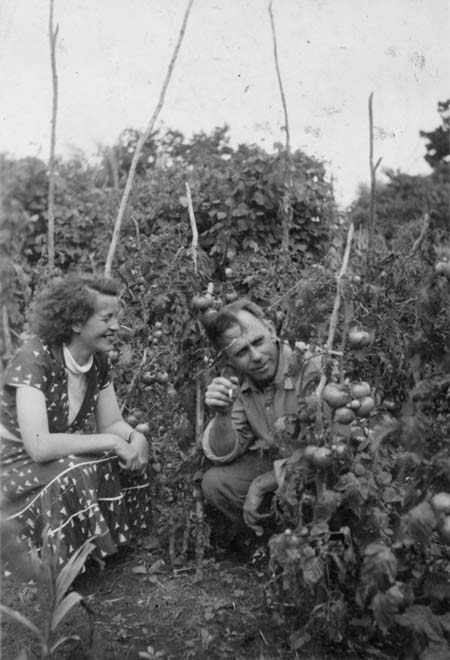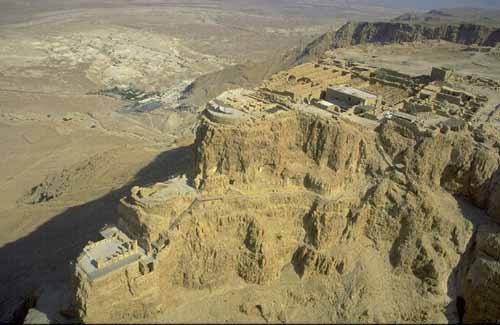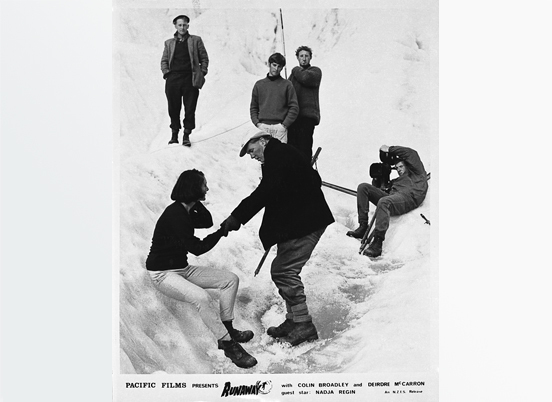1. A remote location?
During her talk at the recent launch of
Celanie, a volume of
Jack Ross' translations of poems by Paul Celan, Michele Leggott praised Ross and his publisher,
Pania Press, for 'airlifting' Celan to New Zealand.
Leggott's metaphor can be interpreted in at least two ways. We airlift personnel and supplies to disaster zones - to villages surrounded by floodwaters, for instance, or to listing ships. But we also airlift people and precious objects out of disaster zones - we helicopter fishermen off wrecks, and sacred icons out of besieged cities.
Michele Leggott didn't explain whether Celan was a precious piece of literary equipment, being flown to a New Zealand in need, or whether his poetry was being evacuated from Europe to this end of the world. What her image of an airlift undeniably evoked, though, was a sense of distance. Whether New Zealand is a place of safety or a zone of distress, it is, the image insists, remote from Europe, and from the world of Celan's poetry.
Paul Celan was raised in a German-speaking household in Bukovina, before the Shoah killed his parents and destroyed the region's Jewish community. He settled in Paris in 1948, and lived there until his suicide in 1970. Celan was a polyglot, but he always wrote his poetry in the German language, despite or because of the terrible events of the 1940s.
Celan's poems evoke not only the Shoah but the wider history of Europe. They allude to other great European writers, like Osip Mandelstam and Rainer Maria Rilke. It is natural, given all this, that Celan might seem like a writer whose concerns are remote from us here in the South Pacific.
The subject matter and texture of Celan's writing might seem to exacerbate the sense of his remoteness from us, and indeed from all his readers. Because his works deal with such extreme events, and use such fragmented, intense language, many literary critics, and a few philosophers as well, have avoided treating him as anything so commonplace as a poet. Charles Bernstein has warned of the consequences of secluding Celan in this way:
Perhaps the greatest risk for the reading of Celan in our time...is that we have venerated him, in the process of removing him not only from his own time and place, but also from our own poetic horizon. . . . [A]
crippling exceptionalism has made his work a symbol of his fate rather than an active matrix for an ongoing poetic practice.
Underlying the view of Celan as a very unusual, perhaps incommensurable writer is the notion that the genocide the Nazis perpetrated against Jewry was an event completely unparalleled in human history. It would be wrong to deny the many unique features of the Shoah. The location of the genocide in Europe, the enormous resources devoted to the task, and the deliberate, calculating way in which death machines like Auschwitz operated - all of these were exceptional as well as terrible.
And yet there are many scholars who have found parallels between the Shoah and events in places distant from Europe during the nineteenth and early twentieth centuries. In their recent books
Hitler's Empire and
"Exterminate All the Brutes", Mark Mazower and Sven Lindqvist argue convincingly that the Nazi conquest of Europe marked the irruption into the Old World of a violence that European powers had practiced for decades in their colonial possessions. In his passionate, precisely written book, Lindqvist showed that the dehumanising rhetoric of the Nazis echoed the discourse of colonial administrators in places like the Belgian Congo and German Namibia. Mazower documents Hitler's admiration for and envy of the British Empire, and shows how he dragged veterans of Germany's fin de siecle tropical empire out of retirement and put them in charge of swathes of Eastern Europe.

It would be very wrong, of course, to suggest that colonisation always involved genocide. The European acquisition of Africa, the Americas, much of Asia, and the Pacific was a long and uneven process, which involved many different strategies and produced widely differing outcomes. Here in the Pacific a single colonial power could behave very differently in different places, depending on its needs and on the situations it faced on the ground. France, for example, wiped out half of the indigenous population of New Caledonia and poured colonists into the territory, while at the same time running a low-profile, laissez-faire administration on the nearby islands of Wallis and Futuna.
Nor was the reaction of indigenous peoples to the coloniser always the same. Here in New Zealand some iwi, like Waikato, Atiawa and Tuhoe, resisted the invasion of their rohe and were expropriated, while others, like Ngati Porou,
allied themselves with the expropriators and were able, through a mixture of cunning and luck, to hold most of their lands. No iwi suffered a fate as terrible as that of the Kanaks.
But qualifications like these should not stop us from recognising
the links between colonisation and the machinery and ideology of genocide. If he were to turn his attention to New Zealand's colonial past, Sven Lindqvist would recognise the rhetoric of exasperated colonial politicians like Edward Traeger, who demanded the 'extermination' of recalcitrant Maori; the balmy predictions by pseudo-scientists like Ferdinand Hochstetter, who looked forward to the extinction of Maori; and the sinister talk about 'smoothing the pillow of a dying race' which became popular in late nineteenth century New Zealand, when the indigenous population was in temporary decline.
2. Drinking dirty water
In the
46th issue of the New Zealand literary journal brief, which was launched at the same time as
Celanie, guest editor Bronwyn Lloyd has placed a poem by
Vaughan Rapatahana directly before an essay by Jack Ross called 'Interpreting Paul Celan'. In 'he whatinga', which translated roughly as 'an escape', Rapatahana attacks the English language which his ancestors were obliged to learn during the colonisation of their rohe. Rapatahana calls English a 'hybrid bastard' tongue, which is incapable of expressing his thoughts and feelings:
with its preternatural
splays
of spelling
and stupidities
of 'style'
In the essay that follows Rapatahana's poem Jack Ross discusses the difficulties that Paul Celan had in expressing himself in the German language. After the Shoah, Celan once said, language seemed like the only part of his heritage which was unbroken. It was a link to the extinguished world of pre-war Bukovina, and to the poet's beloved mother and father. But German had also been the language of the men who had killed Celan's parents, and deported Bukovina's Jews.

The famous obscurity of Celan's poems comes partly from his mistrust of the language in which they were written. Celan had a fuming desire to write, and perhaps hoped by writing to make some sort of sense of the traumas of his youth. At the same time, he feared that by setting down words and lines and stanzas in a contaminated language he was falsifying or dishonouring his experiences, and the experiences of his people. Celan was like a man lost in a desert who came across a pool of filthy water. He had to drink, but feared that the deep, desperate draughts he took might kill him. To read the poems in
Celanie, with their gnomic images, oxymoronic maxims, strange neologisms, and dizzyingly sudden line-breaks, is to see Celan both slaking his thirst and sickening himself:
If one of these stones could
let us know
what keeps it silent
here
near the old man's Zimmer-frame
it would open like a wound
into which one dives
alone
far from my voice
from all our redrafts
white
During his childhood in the 1960s, Vaughan Rapatahana attended schools where Maoritanga was a matter of indifference, if not contempt; as an adult, he has taught the Maori language in a series of schools and universities, and
has argued aggressively for the importance of other Polynesian and Pacific languages. Rapatahana is one of the editors of
English Language as Hydra, a new book in which a collection of anti-imperialist scholars berate the influence of English on their societies with a ferocity rarely encountered in academic texts.
Rapatahana's poems, which have been published in large numbers inside and outside New Zealand in recent years, are a mixture of elegy and invective. Even as he mourns whanau, friends, and old classmates who have suicided, taken up semi-permanent residence in prisons, or dedicated themselves to the harsh disciplines of alcoholism, the poet links these tragedies to the colonisation of his country in the nineteenth century, and to continuing indignities:
'typical bloody Maori'
she snitched,
assuming
me
one
of her kind:
'you don't look like a Maori'
her brazen
shibboleth,
when
I protest...
she
didn't intuit
my
own
inner
tube,
swell
fulminating,
just
about
ready to rupture,
r e a c h o u t
& strangle her
in irredentist fury...
And yet Rapatahana writes most of his poems in English, was awarded a PhD for a thesis on the massive oeuvre of Colin Wilson, the eccentric English mystic and novelist, and has, for the past few years, made a living teaching the hated English tongue to young Hong Kongers. Like Paul Celan, Vaughan Rapatahana is unwilling or unable to abandon the language he distrusts so intensely.
Rapatahana's tormented relationship with English is evident in the surfaces of the poems in his recent books
Here, Away, Elsewhere and
china as kafka. In his introduction to
Home, Rapatahana says that his short, tight poems are 'an attempt to impose some form' on the 'massive chaos' of the world. A typical Rapatahana poem describes and discusses an experience concretely and rapidly, in lines that are rarely more than four syllables long. As he writes, Rapatahana frequently finds his feelings - his anger, his sadness, and sometimes his hope - chafing against his short lines. In apparent frustration, he begins to give words a bold type, or to capitalise them, or to tear them apart. Sometimes Rapatahana tries to make the shapes of his words embody their meanings. The letters of 'long-winded' are spaced out; the last letter of 'end' is capitalised. It is as though the poet is trying to break with language, and to communicate in some primordial and direct way with us.
Rapatahana has written often about his current life as an expatriate in China. Earlier New Zealand writers like James Bertram and RAK Mason reacted excitedly to China, seeing its vastness and wild complexity as a relief from the tight little towns of their homeland, but Rapatahana has found in the Middle Kingdom an elaboration of much that he detests about New Zealand. In the title poem of
china as kafka he complains about the relentless brume/ of shale-shroud cities', and 'suited goons' who do the work of a neo-colonial gangster state, giving 'show trials/no trials' to ordinary Chinese who object to the theft of their land by mining companies and developers.
Bronwyn Lloyd's inspired juxtaposition of Rapatahana and Celan suggests new ways of reading both men. Instead of treating Celan as a poet sui generis, and a remote monument to a unique tragedy, we can perceive continuities between his work and that of an explicitly postcolonial writer like Vaughan Rapatahana. To say this is not to try to equate the lives and work of Rapatahana and Celan, or the colonisation of New Zealand with the imperialist rampages of Nazi Germany in 1940s Europe.
3. Fortresses and sieges
Neither Rapatahana nor Celan can ever take words or history for granted; both forsake the surface elegance and easy clarity that a more secure linguistic and cultural identity can give a writer. And yet there is a romantic strand in the poems of both men, a desire for security - personal, historical, linguistic - which is perhaps impossible. Celan and Rapatahana offer their readers symbols of safety and tranquility which stand like high islands above the storms of their texts.
Both poets celebrate territories which they believe offer sanctuary to their peoples. In a number of his later poems, Celan presented Israel, a nation he visited in 1969, as a site where Jewry could be saved and renewed. Celan was fascinated by Masada, the fortified rock where Jewish rebels had committed suicide en masse rather surrender to a Roman siege in 72 AD. When Israeli soldiers recaptured the Old City of Jerusalem during the Six Day War of 1967, Celan celebrated with a poem that invoked the ancient fort:
Imagine it:
Masada’s swamp soldier
hauling himself home
ineradicably
against the wire’s every thorn.
Imagine it:
the eyeless, the shapeless
rousing you to freedom
with their furious digging
until you strengthen
and rise.
Imagine it: your
own hand
has held a scrap
of earth,
more habitable, that
suffered upward again
into life.
Imagine it:
this was borne over to me —
a name awake, a hand awake
forever —
from the ones who will never be buried.
If Israel was the fortress of the Jewish people, then Masada was, for Celan, the fortress within the fortress. Its tragic history only seemed, in some mysterious way, to reinforce its inviolability.
Vaughan Rapatahana's sanctuary is the
East Coast of Te Ika a Maui, where Te Whanau a Apanui and Ngati Porou have held most of their land, and the Maori language is still often heard in pubs and churches and at cattle sales. Although he lacks close blood ties to Ngati Porou, Rapatahana has bought a house in Te Araroa, a small town built where a gravel road turns off to the East Cape. In a comment on Reading the Maps, he explained that:
I also believe there are already semi-autonomous 'Maori states' anyway - Matakaoa [the district around the East Cape]
and Urewera are just two examples - which is why my kainga is Te Araroa! Koro Dewes was never joking when he said there should be toll gates at the entry points up to the East Coast!
If the East Coast is Vaughan Rapatahana's fortress, the place of safety and beauty he counterposes with the chaos and ugliness of the wider world, then Whetumatarau, the mountain that stands over Te Araroa, is the fortress within his fortress.
Pressure from contending tectonic plates pushed Whetumatarau out of the Pacific, and the mountain's cliffs are sown with the fossils of vast extinct sea creatures. The pa on the summit of Whetumatarau was considered impregnable; any army trying to take it would have had to advance on its knees, in single file, up a crumbling parody of a track. Ngati Porou hapu from up and down the East Coast would shelter on Whetumatarau during wartime, and in 1821 hundreds of fighters and civilians took refuge there from Hongi Hika's fleet of musket-waving raiders. Rather than storm Whetumatarau, Hika pretended to retreat back up the coast, then slaughtered his enemies when they had deserted the safety of their pa.
For Rapatahana, Whetumatarua is a symbol of invulnerability and of cultural pride. In
china as kafka, he juxtposes a tribute to the 'elemental.../ embedded inviolate' mountain with an account of a visit to the 'sagging...stuttered stone' known as Angkor Wat. Whereas Whetumatarau is pure and impregnable, the tourist-ridden, pockmarked Angkor Wat is a depraved place, both 'phallic' and impotent, self-aggrandising and violated.
There is irony in Celan's celebrations of Israel and Masada and Rapatahana's odes to the East Coast and Whetumatarau. The Israelis took control of Masada in a war which deprived another people, the Palestinians, of much of their rohe; Ngati Porou, the iwi Rapatahana idealises, fought with the Pakeha invaders of Aotearoa against more recalcitrant tribes.
Paul Celan did not live long enough to reflect on the wars Israel would fight after 1967, and the transformation of a nation founded as a sanctuary from colonial violence into a colonial power. Vaughan Rapatahana, the English-hating English teacher and anti-imperialist idealiser of a kupapa iwi, will have to deal with some of his contradictions in the years ahead. We should look forward to the next book from this difficult and important poet.
[Posted by Scott Hamilton]












.jpg)
.jpg)


















a.jpg)





